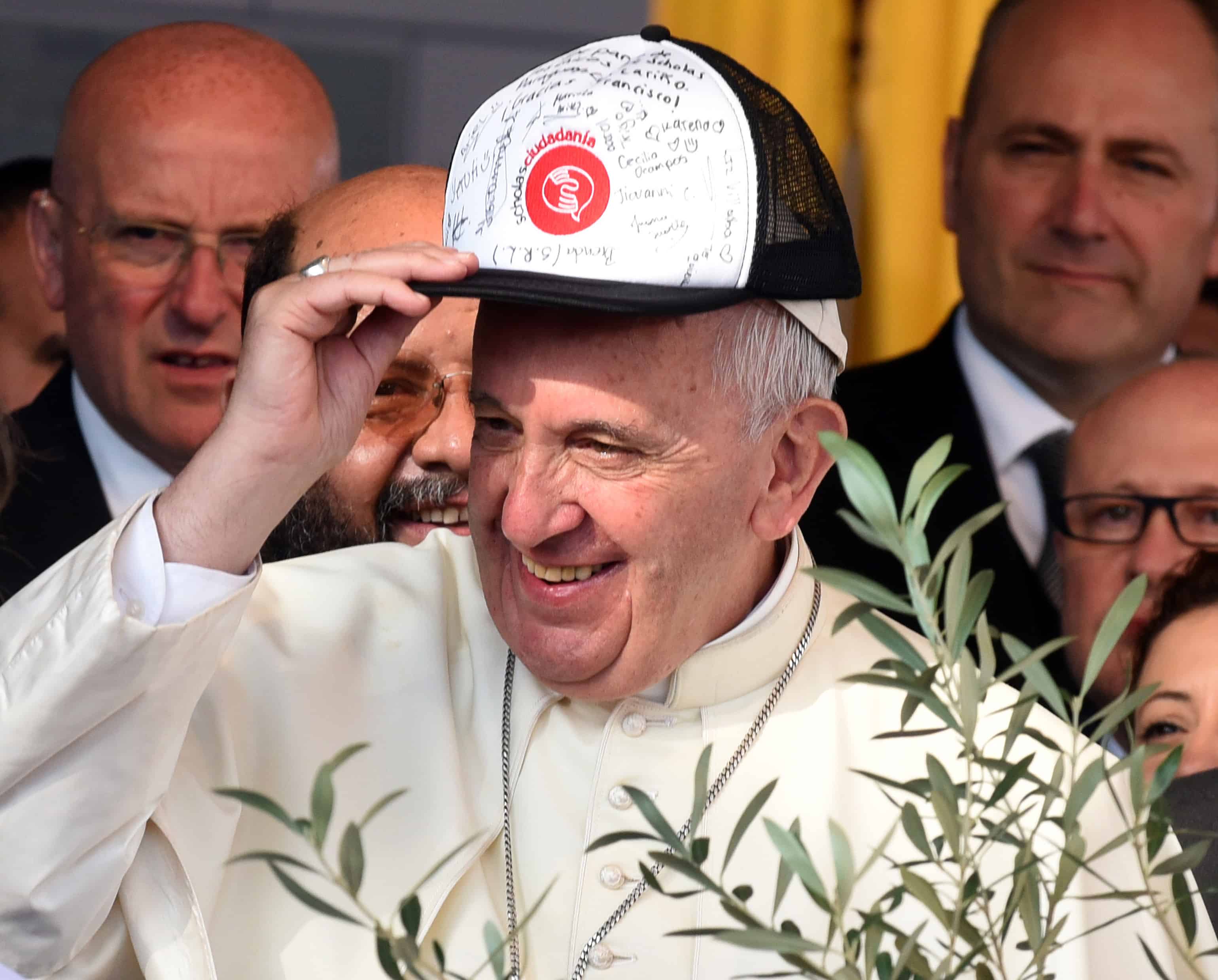BUENOS AIRES, Argentina — A few years ago, when he was not yet Pope Francis, Cardinal Jorge Mario Bergoglio, the archbishop of Buenos Aires, visited the convent where he attended kindergarten in the city’s Flores neighborhood. The nuns gathered around.
“Sister Rosa,” he asked one of his first teachers, “what was I like?”
“A little demon,” she bellowed. The nuns burst out laughing.
“Jorge was a restless boy, always running around,” said Sister Martha Rabino, 74, the mother superior, who was present that day. “The sisters say he wouldn’t sit still.”
The restless boy from Flores is today a restless pope. In the two years since he was named pontiff, Francis, 78, has brought a distinctive rebellious streak to the seat of Saint Peter. Papal observers predicted that he would shake up the Vatican hierarchy. Few expected him to dive into global politics with this much evangelical fervor.
With Francis preparing to address Congress and the United Nations during his first papal visit to the United States, from Sept. 22 to 27, his moral and political convictions will be on display as never before.
In recent months, the pope’s indictment of unfettered capitalism as “the devil’s dung” and his calls for sweeping cultural and lifestyle changes to reduce global warming have fueled a perception among some conservatives that Francis is a leftist, with Marxist views dressed up in white vestments.
Here in Argentina, where Francis had a reputation as a conservative, those who have known him for decades find such characterizations risible, throwing their hands in the air, as if told the Brazilians were better at football or Chile had better wine.
“Absurd,” said Julio Barbaro, a former Argentine congressman who studied at the San Miguel Jesuit college with Francis in the 1960s.
The pope, Barbaro said, is a “Peronist” whose views don’t fit into the left-right boxes of the U.S. political divide.
Gen. Juan Perón ruled Argentina from 1946 to 1955, and again briefly in the 1970s, and Peronism has endured as a dominant force in the country’s political life. It attempts to bridge class divides through the combination of a strong, authoritative leader, a highly centralized and generous social welfare state, and heavy doses of quasi-religious nationalist sentiment. Even after her death in 1952, Perón’s wife Evita was a figure of adoration among the country’s working poor.
Peronism’s appeal for many postwar Argentines, including the young Francis, was its rejection of both Marxism and laissez-faire capitalism. “It was a way to help the poor that doesn’t believe in class struggle,” Barbaro said. “It believes in capitalism, but with limits.”
Perón was a classic Latin American strongman, too, stifling dissent and styling himself as the embodiment of Argentine national pride; the Peronism of Francis’s childhood did not exalt individual freedom or free markets. But his “third-way” policies and personal touch endeared him to working-class Argentines who were suspicious of wealthy elites yet wary of international leftism at the same time.
Roman Catholicism and Peronism had much in common, and the young Francis was steeped in both.
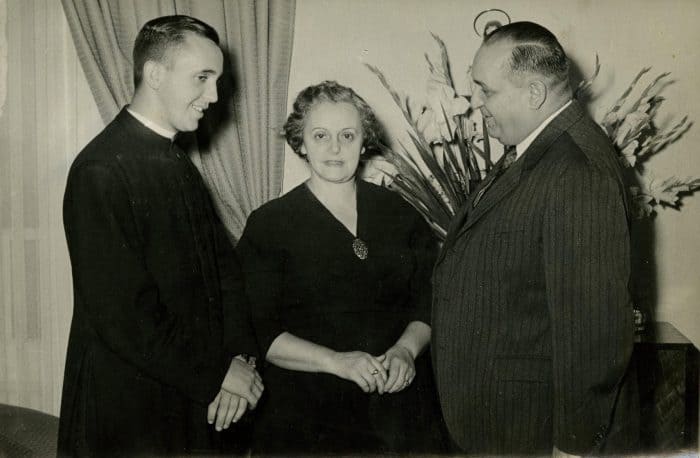
God and Gandulla
The Flores neighborhood of Francis’s childhood was a kind of early Peronist idyll. Mario José Francisco Bergoglio, the pope’s father, had come to Argentina from Italy’s Piedmont region with his parents and five siblings in 1928. Hard-hit by the Depression, they moved to Buenos Aires in 1932, according to Francis biographer Austen Ivereigh. They turned to the church for economic, social and spiritual relief.
The pope’s father found work as a bookkeeper for neighborhood businesses. He married Regina María Sivori, the daughter of Italian immigrants, in 1935. Jorge Mario, the first of their five children, was born the following year.
Flores (“Flowers”) was a neighborhood far from the city center that still had patches of pasture land and tiny vegetable plots. The Bergoglios moved to a house on Membrillar Street where Francis would spend nearly his entire childhood, walking to school and catechism, and playing football until the sun went down or the police chased the neighborhood boys out of the park.
Flores was a working-class community of middle-class optimism, populated by Italian, Spanish, Jewish and Armenian immigrants. Delivery men sold milk, vegetables and bread from horse carts, and fresh fish on Thursdays. With few cars, everyone walked or took trolleys.
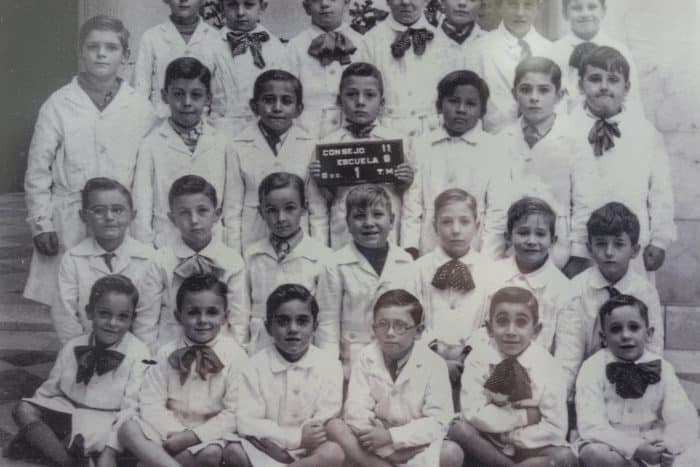
Francis attended a public primary school two blocks from his home. Ernesto Lach, whose parents were Jewish immigrants from Poland, sat next to Francis in fifth grade, in 1948.
“I remember him as a smart, serious boy, with excellent manners,” said Lach, 79, who still lives in the neighborhood. Their teacher that year, Roberto Brusa, who had trained as a chemist, was stern but inspiring, Lach said. Francis, perhaps because of Brusa’s example, also pursued chemistry in secondary school.
Bernardo “Nano” Gandulla, one of the era’s biggest soccer stars, had recently retired and lived in a house nearby, Lach said, and he “would come out to coach us in the afternoons.”
It was like growing up with Joe DiMaggio in the neighborhood. “We idolized him,” Lach said. Though skinny and not especially skilled with the ball, Francis would become a lifelong devotee of San Lorenzo, one of Buenos Aires’ most storied teams.
“He’s always followed politics and soccer closely,” Barbaro said, “because that’s what his parishioners cared about.”
The family home was clean, orderly and austere, remembered Osvaldo Devries, a childhood classmate of Francis’s younger brother, Alberto, who died in 2010.
“We would go to the Bergoglio house after school to do our homework, then play soccer in the park,” Devries said. The parents, he recalled, were formal and religious.
“I don’t remember ever seeing them show affection to their sons,” Devries said. “There was always something a little distant about them.”
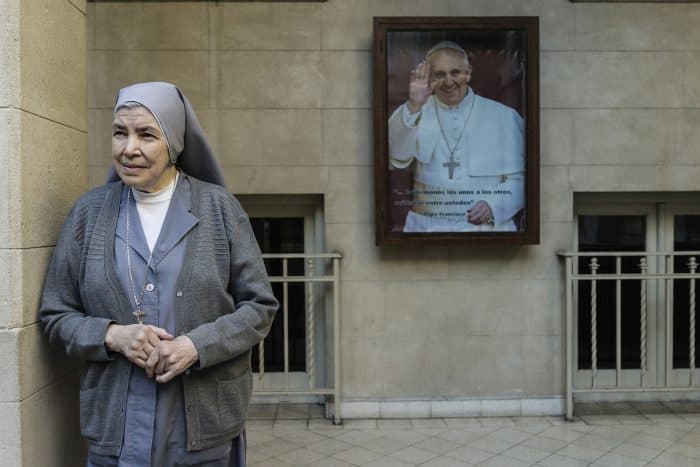
The seminarian and the communist
Francis has said that he absorbed his religious views through his maternal grandmother, Rosa. As a young woman in Italy, she was a member of Catholic Action, which defended the church against the rise of fascism. Francis joined a local chapter of Catholic Action as a teenager, when it was closely linked to Perón.
Francis learned to shoot pool and dance with girls at parties. He loved the Argentine style of tango known as milonga, and later worked on weekends as a doorman at local bars.
Francis studied chemistry at a small, specialized public high school that was part of the Peronist push to turn Argentina into an industrial power. He took a part-time job as an apprentice in a lab.
It was around that time, when Francis was almost 17, that he was walking past his neighborhood’s San José de Flores Basilica, one of the city’s most spectacular cathedrals, with soaring marble columns and elaborate frescoes. He was on his way to meet friends, and something beckoned him inside. He approached a confessional and said he knew at that moment that he wanted to be a priest, describing a powerful moment he likened to “being thrown from a horse,” according to Ivereigh.
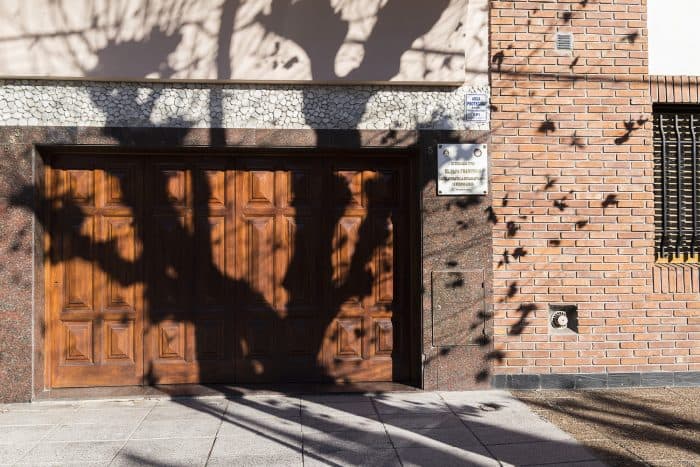
His mother had wanted him to be a doctor, so he had to hide his theology books from her as he prepared for the seminary.
At the lab where he worked, Francis met one of the other women he mentions as a major influence in his life: his supervisor Ester Ballestrino. She was a Paraguayan feminist and communist militant, in her 30s, and she became a mentor to Francis. The two maintained a friendship for many years to follow.
This was a relatively quiet time in Argentina, before the storm that would split the country and Francis’s own Jesuit order.
When a military junta seized control of Argentina in 1976, many saw the coup as a short-term solution to restore order and rein in violent insurgent groups like the Catholic-inspired Marxist guerrillas known as Montoneros and the death squads that hunted them.
The “Dirty War” that followed lasted seven years. At least 10,000 Argentines were murdered or went missing.
One of them was Ballestrino. She had become a founder of the “Madres de la Plaza de Mayo,” the mothers of the “disappeared” who marched with portraits of their missing children to alert the world to the horrors of the dictatorship. Ballestrino’s pregnant 16-year-old daughter had been held for months in military custody, then fled to Sweden upon release.
Ballestrino called Francis one night in 1977, and he agreed to hide her large collection of books, including some Marxist volumes that, if found, would have meant a death sentence. She and the other mothers were preparing to go public with a list of 800 “disappeared” Argentines.
She was abducted soon after. As with many of the Dirty War’s victims, she was tortured in the basement of the Navy Mechanics School, then likely drugged and, with others, thrown alive into the Atlantic Ocean from a military aircraft.
Their bodies were buried in a mass grave after washing ashore. Forensic investigators identified their remains in 2005, and Francis agreed to grant their burial in a Buenos Aires church cemetery.
In 2010, three years before he was named pope, trials were underway for several military officers suspected of war crimes, and Francis was asked to testify.
He looks deeply uncomfortable in the recording of his testimony. An attorney asks what he did after learning that Ballestrino had been taken into custody.
Francis said he tried contacting her family. Who else? the attorney asks. He spoke to human rights organizations, Francis said. The attorney asks more bluntly: Did he try to intervene with military authorities?
He did not. “I did what I could,” he said.
He often thinks about Ballestrino, a link to the Argentina of his childhood and his Flores neighborhood, he told biographers Sergio Rubin and Francesca Ambrogetti. “I blame myself for not doing enough,” he said.
His leftist critics within the clergy and Argentine human rights organizations would blame him, too — and the Catholic church generally — for not taking a more forceful stand against the dictatorship. But Francis said he sheltered several priests who were in danger for their views and saved others by helping them flee the country.
Francis survived Argentina’s darkest episode, but not without scars, or enemies.
Read more coverage of everyone’s favorite pope here
The politics of humility
Francis attended seminary at the Colegio Maximo, the Jesuit college in San Miguel, an hour outside Buenos Aires, and would spend most of his next 25 years there as a student, instructor and eventually as the school’s director.
It was at the Colegio Maximo that he came under the influence of Juan Carlos Scannone and a group of other young priests who advocated a “theology of the people” (teologia del pueblo) as an alternative to Marxist-inspired liberation theology. It was the pastoral approach that Francis would adopt, emphasizing humility, simplicity and intimate contact with society’s poor and most vulnerable. A theology of the people meant living among the poor, not talking about them in the abstract.
Scannone today is 83 and still lives at the Colegio Maximo, where he attended Francis’s ordination. No, he assured a visitor, the pope is not an anti-capitalist.
“He doesn’t criticize market economics, but rather the fetishization of money and the free market,” Scannone said. “One thing is market economics. Another is the hegemony of capital over people.”
Francis’s split from Argentina’s more left-leaning clergy would define much of his career as a Jesuit. But at the Colegio Maximo, he lived his beliefs — and set an example for others — by practicing a politics of humility, austerity and actions over words.
“He would wake up early and do the laundry before the staff arrived,” said Mario Rausch, a Jesuit brother who still lives at the college. There were several poor neighborhoods nearby, and Francis would walk across muddy fields to celebrate Mass there on weekends. Then he would return to cook huge meals for the whole college. He slept in a small room with a simple, wood-frame single bed.
The Colegio Maximo thrived in the 1970s and ’80s under Francis, but today it seems somewhat like the church itself: beautiful, aging, perhaps a bit empty. Rausch is one of only four brothers who still live there, down from 15 in Francis’s time, spending his days alone in a dusty bookbinding workshop.
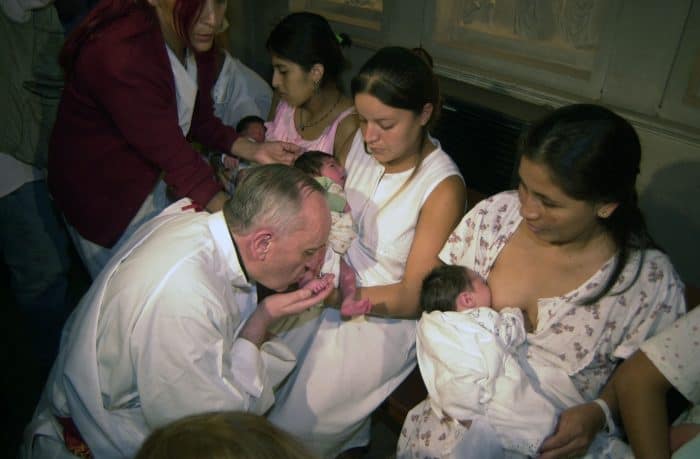
A letter from a former student
A few months after he became pope, Francis called Rausch one morning to wish him a happy birthday, as he had done for years. The college receptionist couldn’t believe it was really the pope calling from the Vatican, assuming it was a prank. It took Francis — who prefers making his own calls — several tries to get through.
“Where have you been?” Francis teased.
“I never doubted that he would remember my birthday,” Rausch said. “But once he became pope, I didn’t think he’d have time to call.”
There are stories like this all over Buenos Aires, among childhood friends, parishioners and others who have saved letters or notes from Francis in his tiny, nearly illegible handwriting. One of the more recent letters is in the office of Rosana Dominguez, the director of Francis’s primary school in Flores.
The school will celebrate its 100th anniversary in September, a few days before Francis is due to arrive in the United States. The school’s classrooms look shabbier than they did in the Perón era of Francis’s youth. It is a school, once more, of immigrant children whose parents have migrated from Bolivia and Paraguay and settled in a tough, drug-scarred slum nearby.
Dominguez wrote to Francis in February hoping to bring the school’s dire financial situation to his attention at a time when the city government was cutting back and more middle-class parents were sending kids to private — and parochial — schools. To her surprise, Francis wrote back a week later, sending a half-page handwritten letter on Vatican stationery.
“That glorious public school — and free!!” he wrote, the two exclamation points an unambiguous showing of support for her cause.
He would not be there to celebrate the school’s centennial, but told her “my heart will be right there with you.”
“I’m at your service,” Francis wrote, “pray for me.”
© 2015, The Washington Post

